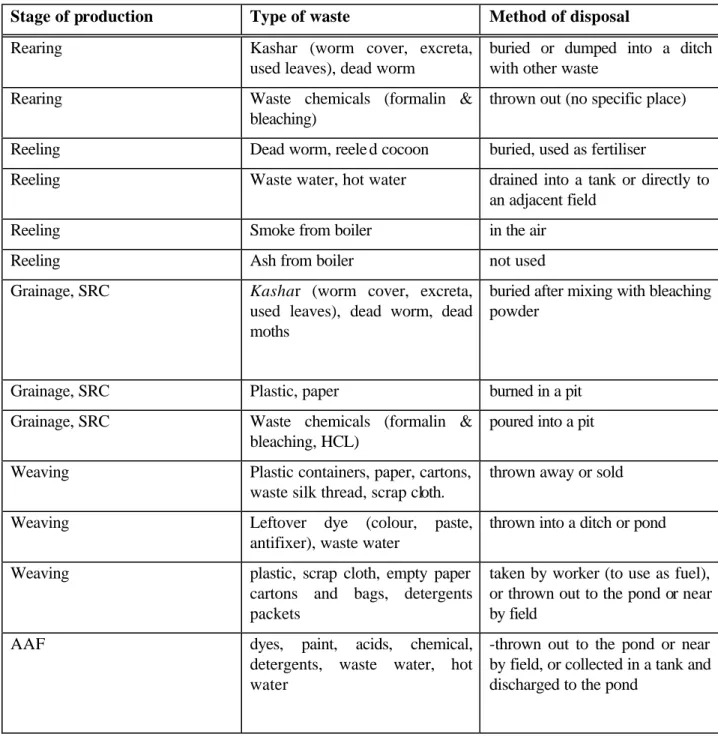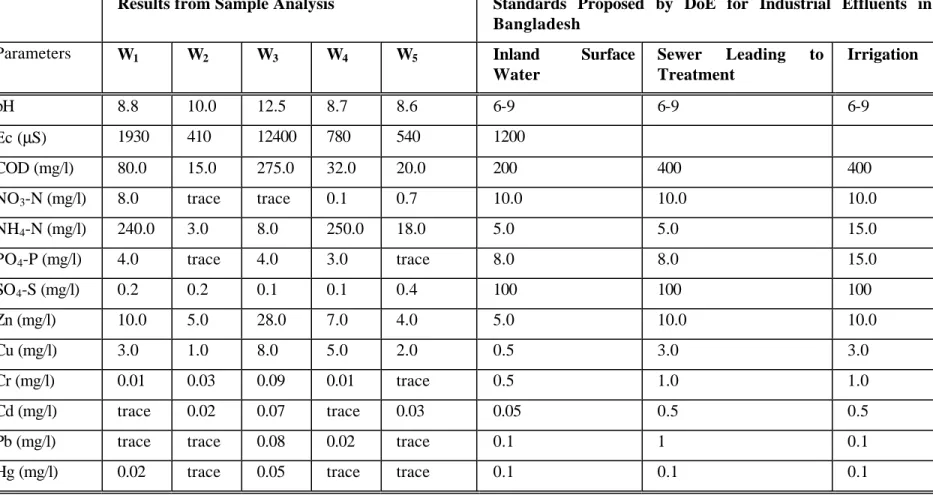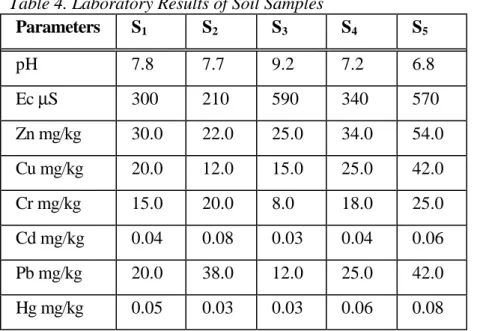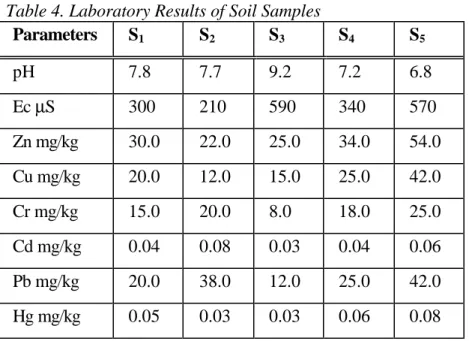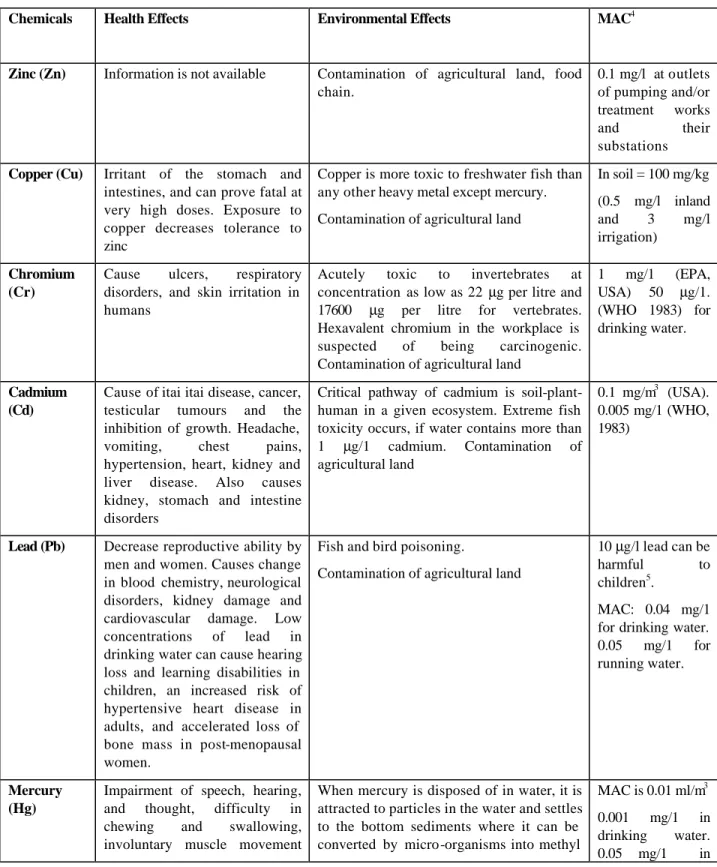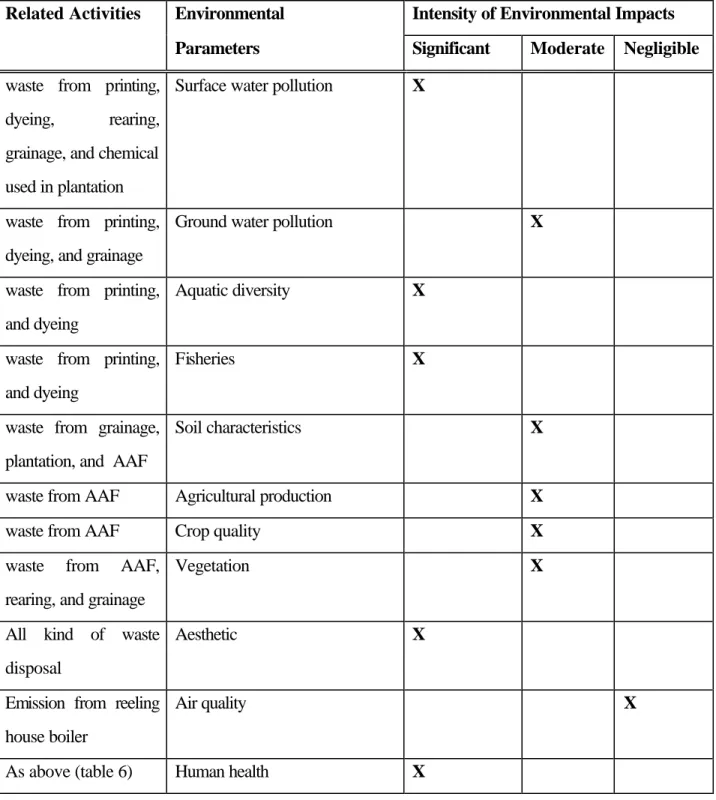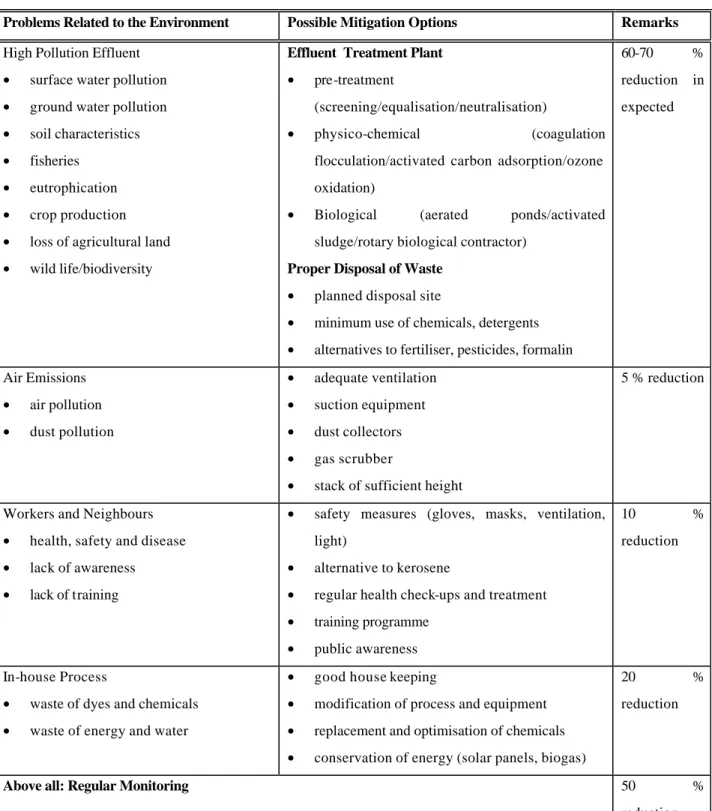A lead content of 0.05 mg/l was found in the water of the tube well (drinking water). Activities of AAF that are also environmentally harmful, such as weaving, dyeing and printing, are included in the study because they are related to the sericulture program. Water sample W2 was collected from the pond where detergent effluent and solid waste in the form of plastic, cardboard and other packaging material is disposed of.
In the acid treatment, everything can be recycled and reused (such as buckets and containers). In the grain centers formalin is used to disinfect the eggs and the grain chambers. In the grain centers, workers suffer from health problems such as coughs, colds and allergies to dust from the silkworm's wings (during mating).
Light is not normally used in winding centers because winding is done during the day. In the Manikgonj changing plant, the waste water from the flow is discharged into a tank, where it is slowly washed into the ground. In the Atghoria winding center, the winding water is changed twice during the work break at 11 am.
Alum is sometimes used in Bangladesh when a high amount of iron is observed in the water. The main chemicals used in the weaving centers are water, starch, gum (an acidic substance to repel insects - about 1/2 pound used per 6 kg of starch). At the Sherpur center most waste is in the form of dye and detergent wastewater.
In the Jamalpur centre, dye water goes into a tank before flowing into the pond. There is also less natural light in the second half of the year from September to January when daylight lasts from 9am. Asthma (which is believed to be allergic in nature) can be caused by fine scales in the air released by the flapping of the silk moths' wings during mating.
There are many chemicals, pesticides and fertilizers used in the various stages of secucultural activities including plantation, rearing, grain and weaving. Gradually, it will increase, which will have a serious adverse effect on the environment in the near future. Fisheries: waste water containing chemicals, dyes, detergents is dumped into the pond (especially in Manikganj and Jamalpur).
Direct disposal of chemicals in the form of waste water to open areas (ditches, ponds, fields).
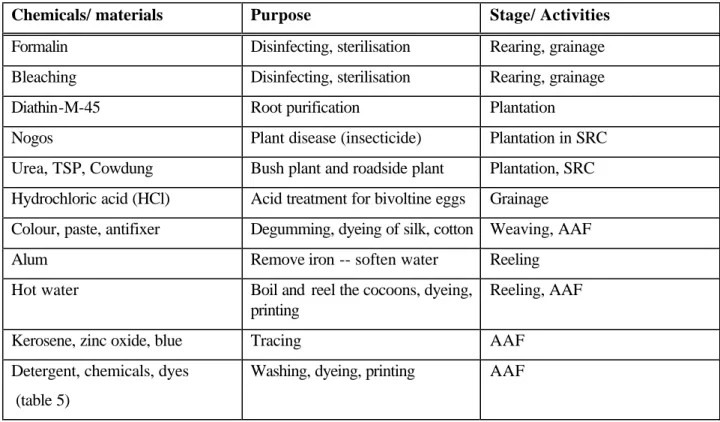
Monitoring of waste stream
There should be a common place for dyeing silk and cotton - then only one treatment plant needs to be set up, which will reduce the cost of treatment. Direct handling of chemicals, dyes or hot water by workers - skin rashes, affected hands, inhalation of strong fumes. Inhalation of steam during coiling causes asthma - Improved ventilation and aeration systems Large amounts of solid waste are left behind - plastics, boxes, .
Once the suggestions from this study have been implemented, a proper monitoring system should be set up to evaluate and monitor the progress of the implementations. This can be done by program staff or other designated staff, as well as through some involvement of the Environmental Group. This can be done by the Environmental Group and will be specific to waste printing and dyeing.
To make it a regular practice, program staff from headquarters may also be involved in monitoring.
Disposal site
Waste reuse (relevant questions)
Training impact
Monitoring must be done whether workers use gloves, masks and mixing sticks during work and whether they dispose of waste in the right way and place. Workers should be asked about waste management and how they should handle chemicals, dyes and detergents.
Health and safety
Environmental assessment for IV. phase of the BRAC Rural Development Programme: use of chemicals in sericulture and aquaculture activities.
Yearly Statement of Detergent Use in AAF Centres
L Quantity Used Per Year
AYESHA ABED FOUNDATION
L. DESCRIPTION CONSUMPTION in 1996 REQUISITION for 1997
PRODUCTION PROCESS IN MULBERRY, SILK
REELING AND SPINNING PROCESS
SILK WEAVING PROCESS
Moriam is about 42 years old and lives with her husband and four children (two sons and two daughters). She does not have a loan from BRAC, but has received an interest-free loan of Tk 5,000/- from her family, which she has not yet returned. She has been growing for ten years, five years of which she grew for the Bangladesh Sericulture Board (BSB) and the last five years with BRAC.
She has a pregnant milch cow and will earn money for her milk in two months. She has been working in mulberry plantations for four years and working with BRAC for eight years. Her elder brother is a rickshaw puller in Dhaka and her elder sister is married and lives with her husband.
She borrowed Tk 3000/- to buy a bull which she will eventually sell and repay the loan in bi-weekly installments. She has two daughters, one is married 20 years old and lives with her husband, the other is about 15 or 16 years old and enrolled in college. She doesn't save money as all her income goes towards living and medical expenses for her and her family.
She has not taken loans through BRAC, even though she is eligible for it as a VO member, because she has no other source of income, only her family, so it would be difficult to repay the loans regularly. Noor Jahan received no formal training for her job, but learned skills on the job. She has not received any training in health or safety, but has been exposed to health/safety issues through health forum meetings held in each village organization.
She had bouts of fever and headache two months ago, during the dying month, which she said were caused by winter cold. She has worked at BRAC since 1989 as a block printer, where she was trained by a skilled printer on the job. She took a loan about five years ago through BRAC and made a house which cost Tk 6,000/- which she paid back.
